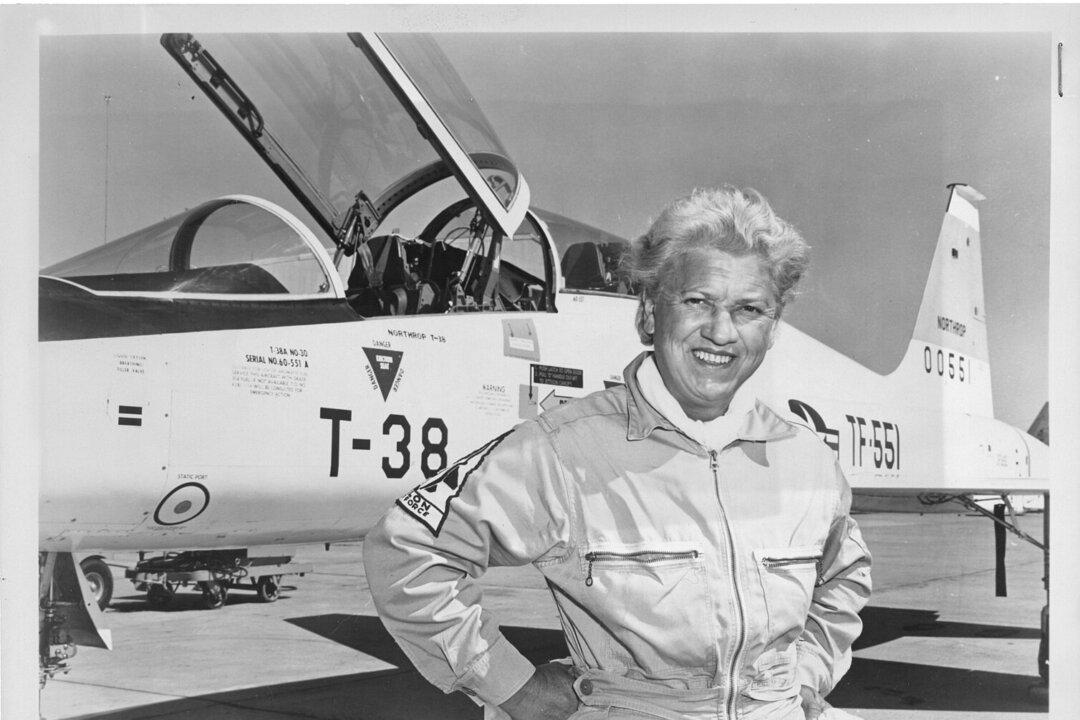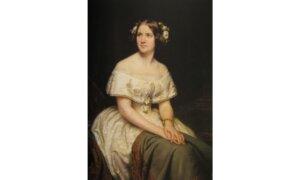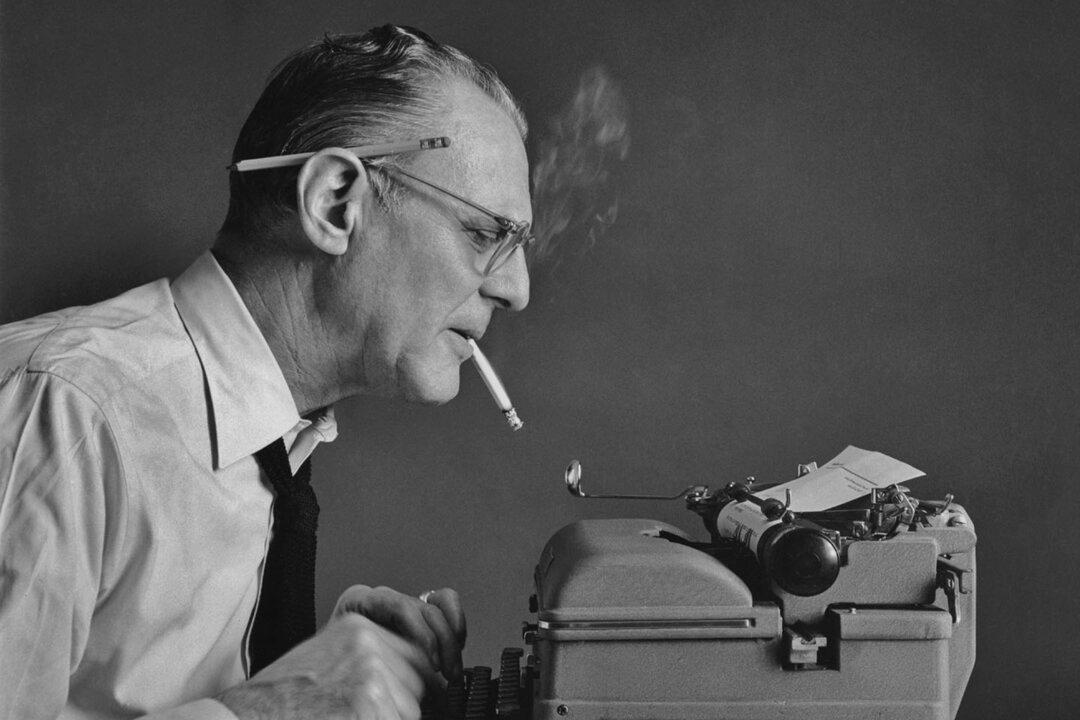In 1987, Bantam Books released Jacqueline Cochran’s autobiography. The poetic title of Cochran’s earlier published memoir, “The Stars at Noon,” was scrapped in favor of the more straightforward, “Jackie Cochran: The Autobiography of the Greatest Woman Pilot in Aviation History.” Since Cochran had been dead for seven years, there was no good excuse to be humble. And for once, the pride wasn’t hyperbole. According to the National Air and Space Museum, Cochran held more records for speed, altitude, and distance than any pilot in history, male or female.

A Fateful Career Change
Born in a Florida mill town in 1906, Cochran was so poor that she often had to wear flour-sack clothes. With determination, she worked hard and trained as a beautician. She eventually became wealthy after, with help, launching her own cosmetics business.
In the early 1930s, Cochran crossed paths with Amelia Earhart. The legendary pilot saw something in Cochran and inspired her to make a career in aviation, altering her destiny forever.
Cochran decided to follow Earhart’s example, going on to set numerous flight records. In 1953 she became the second person to break the sound barrier (the first was Chuck Yeager). In 1964, she broke Mach 2.

Cochran’s most important contribution to aviation was not the records she broke, but her role in forming and training a flight corps that aided America during World War II. When the war broke out, Cochran started knocking on doors. She approached the chief of Army Air Corps, Henry Arnold, and inquired about forming a women’s branch. In November 1942, the Women’s Flying Training Detachment (WTFD) was formed.
Dangerous Civilian Missions

More than 25,000 women applied to the WASP program. Fewer than 2,000 were accepted. Starting in September 1943, Cochran put the first batch of trainees through four months of rigorous training at Avenger Field in Sweetwater, Texas. From 6 a.m. to 10 p.m., they underwent physical training and drills, studied math and engineering, and (of course) learned the nuances of flight. Only 1,074 women successfully completed the rigorous training program.
Since they were to be civilian pilots, combat tactics were not taught. Their duties were still hazardous, though. Though many of the ferrying missions involved delivering military aircraft, another responsibility was flying damaged planes for repairs. Some pilots learned to fly attack planes and flew missions to help antiaircraft gunners in the Army and Navy practice their aim. The male recruits shot at targets towed by the women pilots.
Once, a B-24 crew shot out the engine of a plane piloted by Madeline Sullivan and Dorothy Hawkins, forcing them to make an emergency landing.
The WASPs logged 60 million miles during the time they were in service, with 38 total casualties. In 1944, they almost became a permanent part of the military when they were given the option of integrating into the Women’s Army Corps. Cochran was stubborn, though. She wanted the WASPs to remain an independent organization and not submit to someone else’s authority, so she fought the decision.
In December 1944, the WASPs were disbanded. Several factors were involved as to why Cochran lost the battle to remain independent. Aside from politics-as-usual in Washington, she didn’t get along with some key administrative officers.
Although they only existed for a little more than a year, the WASPs made a definite impact. More books are being written about them than ever before, and they continue to inspire millions today with their example.

From a Hovel to the Stars
Amelia Earhart’s tragic death gave her life a romantic aura that few aviators have matched. Jacqueline Cochran surpasses her, however, in the sheer amount of her contributions to flight. Given that she lived longer than Earhart, this is only natural.Her maxim, “I could never have so little that I hadn’t had less,” was the key to pushing herself and casting aside her fear of failure. Cochran is a classic example of the American dream: a woman who rose from nothing to the pinnacle of success through an adventurous spirit.
And a bit of luck. “God helps those who help themselves, I’d say to friends. But does he protect the stupid? They would ask.”
To this, Cochran answered in the affirmative, saying that it was probably the only reason she lived to write an autobiography. One of the many behaviors that faith helps bolster is risk-taking.
It was a determination that many of her fellow WASPs shared.








